Mare and Foal Fencing
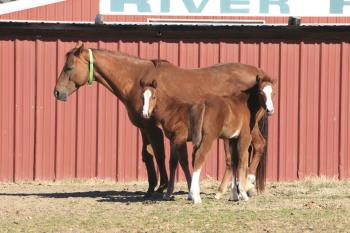
Just as expectant parents prepare a safe and comfortable nursery for their human baby, broodmare owners should prepare a safe turnout for their mares and foals. Nursery paddocks needn’t be elaborate, but they do need to be baby-safe.
Babies of all species are curious, innocent, and can easily get themselves into terrible predicaments. Foals are no different. From his first few hours of life, your foal will begin testing the boundaries of his world. He’ll need lots of room as he learns to romp, play, jump, leap, roll around and fall fast asleep in the warm sun. Exercise is critical to the development of a strong skeletal system that will turn him into an athlete as he grows. Let’s look at some of the components of safe fencing and turnout for mares and foals.
Be sure to give your mare and foal time to bond. Plan on keeping them separate from all other horses for at least the first few days. If you have a kind bachelor gelding or non-alpha mare who has experience with foals you might turn them out in the same field, but only after bonding has taken place. Watch the herd carefully. You should separate horses who threaten your mare or foal in any way. One kick from a fresh horse can spell disaster to a foal.
Even if you choose to separate your horses, you’ll need to remain vigilant to ‘over-the-fence’ threats. Other horses may be curious, but if there is sparring over the fence or if your mare appears stressed (pinned ears, swishing tail) arrange to put more distance between her and the offending horses. If you don’t have a lane between paddocks (the ideal situation), consider moving the other horses to more distant paddock or create a temporary electric fence barrier to keep neighbor horses at a respectful distance.
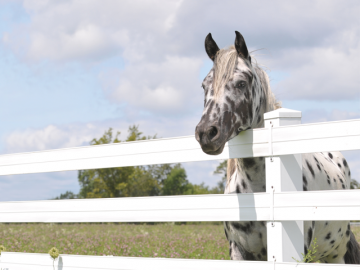
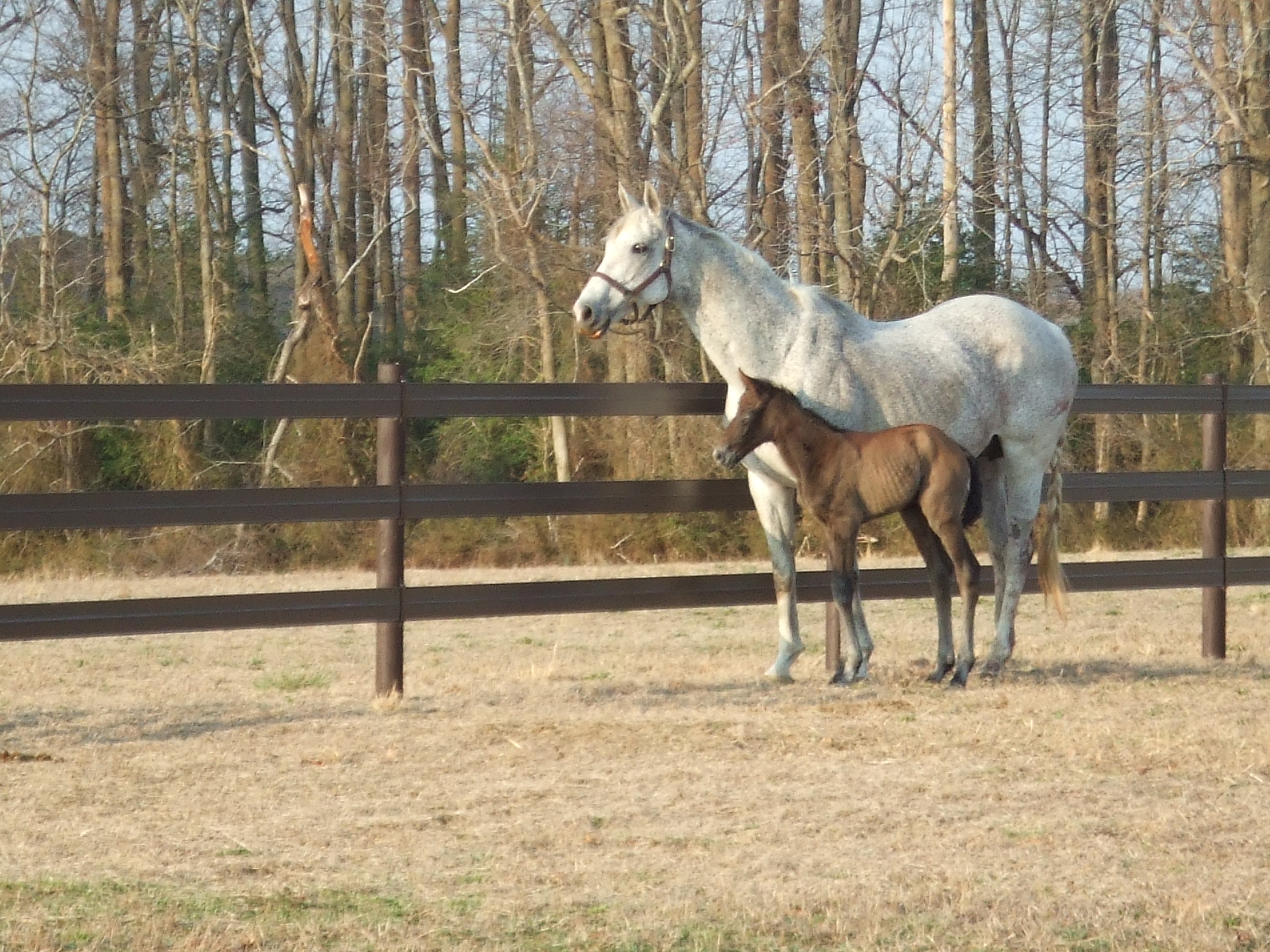
Foals are little enough to roll under the fence or slip through fence rails. They’re clumsy at first and very impulsive. It’s easy for a foal to stop, drop, and roll near the gate or the fence, ending up on the other side, separated from his dam. To eliminate this risk, spacing between rails should measure no more than 6” to 8”. This is true for minis and small ponies as well.
Ramm’s new High Impact Flex Fence series is the perfect choice for the little ones. It flexes up to 6” on impact so no chance of the little guy getting hurt if he runs into it. We recommend five rails for foals, starting with the minimum 6”-8” space at the bottom and increasing that space as you reach the top rail. The High Impact Flex Fence grows with your foal as well. So, even when he’s a fractious two-year old, this fence offers a convincing barrier and will keep him safe!
If you simply need to tweak your existing fencing, (wood rail or electric) consider using the High Impact Flex Fence to add a rail or two. This will make a safe fence for foals that is also attractive and incredibly durable.
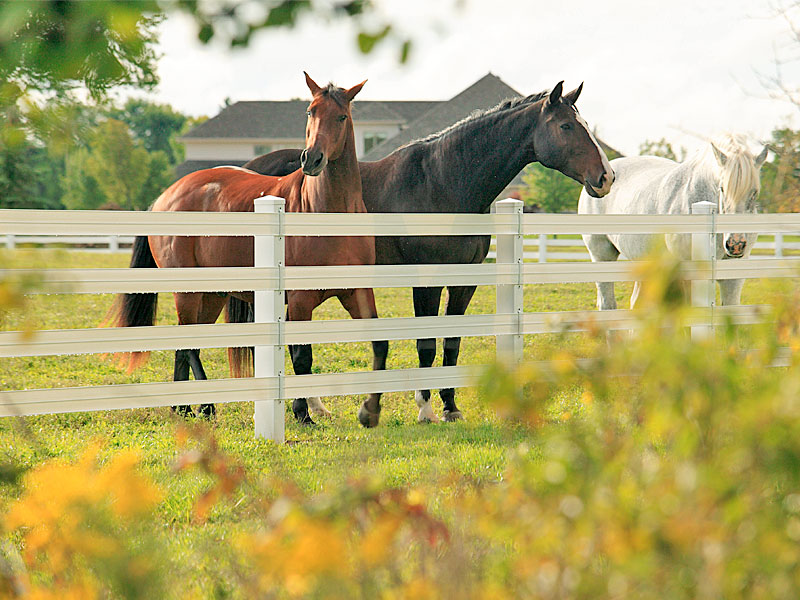
It’s a good idea to walk the nursery paddock or field before your foal arrives. Look for trouble spots where a young foal might get into trouble. Be sure your water trough is accessible, but can’t become a trap to a curious foal. Check the trough for rough or pointy edges. If you use tires for feed or hay troughs, remove them. Very young foals can become trapped in these small spaces.
Check fences for splintered rails or protruding nails. Test gate latches to be sure they’re functioning correctly and won’t pinch a curious nose.
Consider natural weaning. Traditionally, weaning has been one of the most stressful events in a young horse’s life as mares and foals are abruptly separated. If you’ve ever listened to a newly separated mare and foal cry for each other, it isn’t something you’ll easily forget. Animal behaviorists believe that weaning trauma can set the stage for much of the separation anxiety we see in adult horses.
Natural weaning uses a gradual separation, much like we’d see in a dam and colt in the wild. In the wild herds, dams discourage their colts from nursing over time, a process that takes almost a full year. While that time frame isn’t possible for most domestic horses, studies have shown that waiting until the foal is between the ages of 6-8 months causes less stress than weaning any earlier.
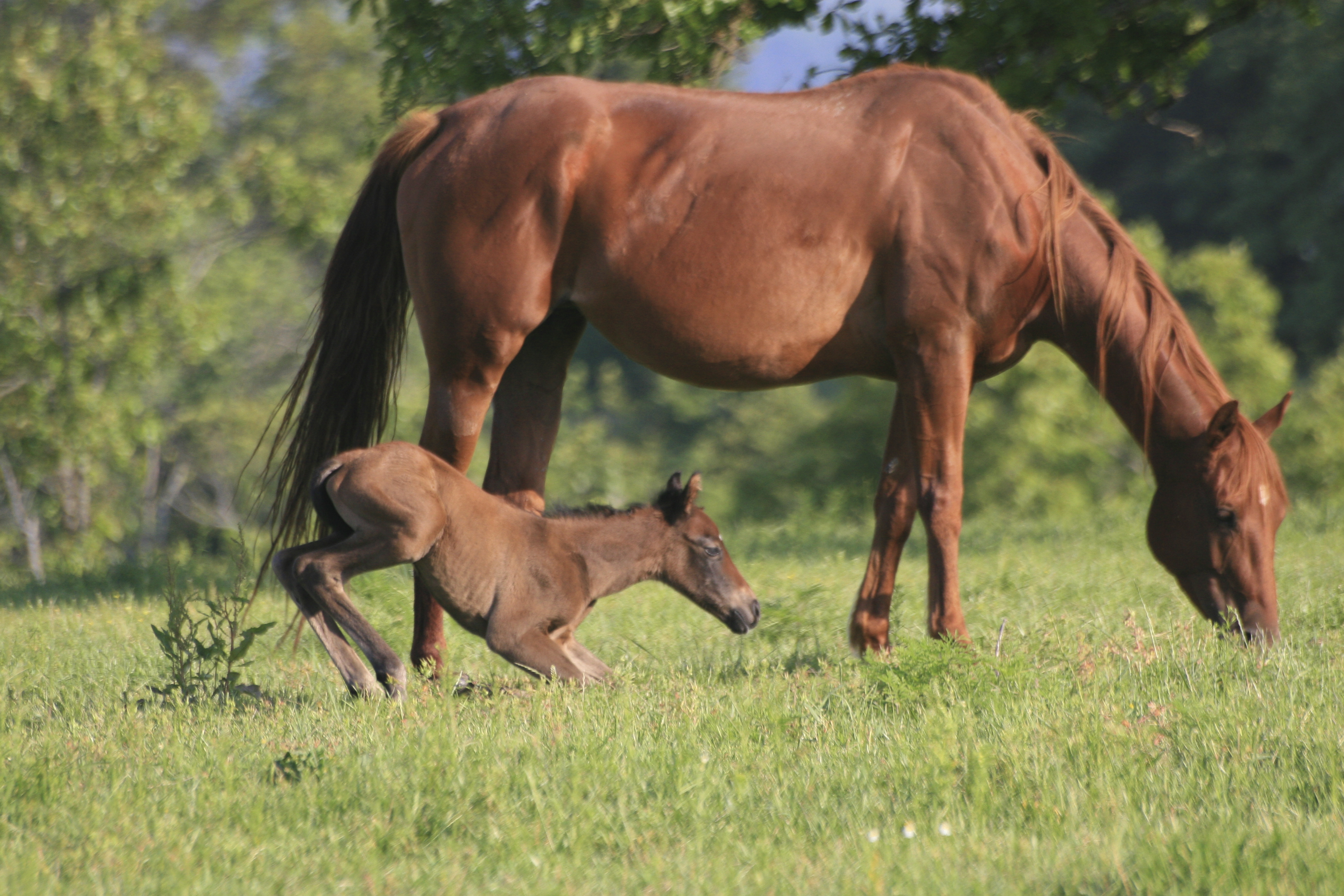
As you approach weaning time, now is the time to introduce that kind, bachelor gelding. This way, the foal will have a steady, friendly companion when you first begin separating him from his dam. At first, separate for short periods in adjacent areas, being sure that both mare and foal can see each other over the fence. The mare’s space should be limited so that she cannot move out of the foal’s line of sight. If the mare disappears, the foal could injure himself in his efforts to get to her. The foal, on the other hand, might feel confident enough to go exploring, especially if he’s bonded with another mare or gelding.
We hope these tips help you prepare for your foal’s arrival. Congratulations on your pending arrivals!
Debbie Disbrow and freelance writer Karen Baril (www.karenbaril.com) have teamed up to write this article. If you have any comments, questions or ideas, we welcome them. Email us debbie@rammfence.com.
